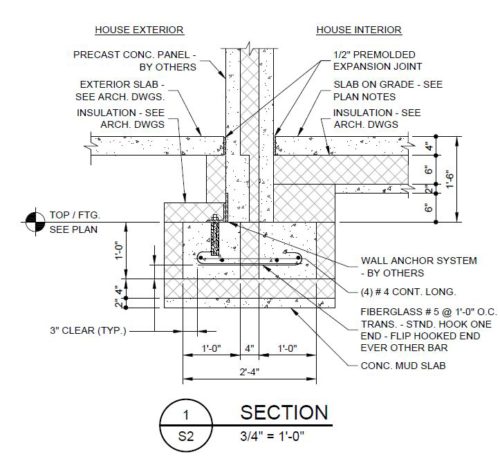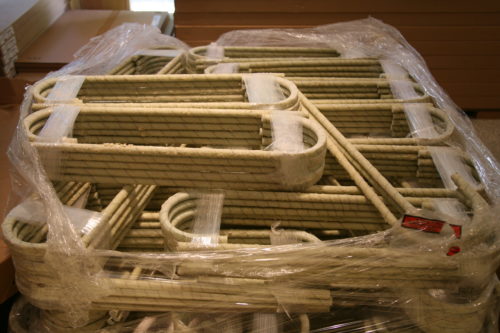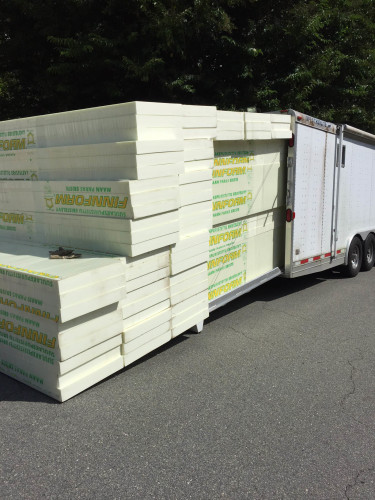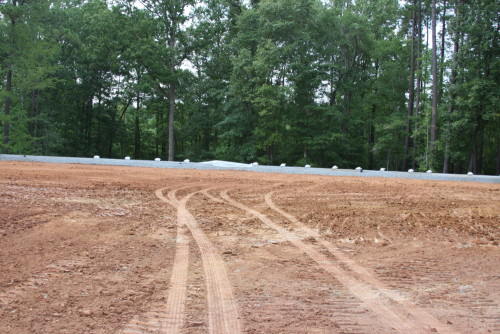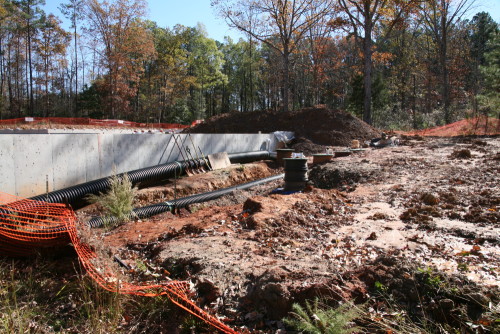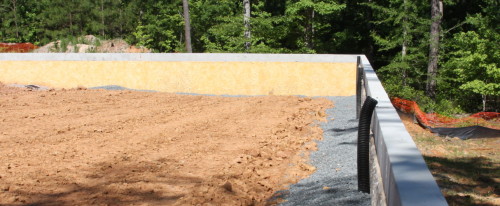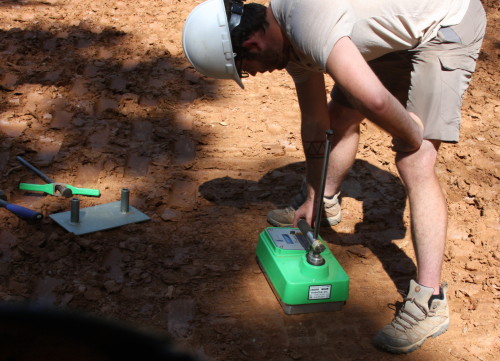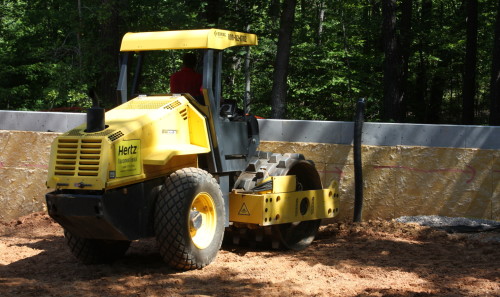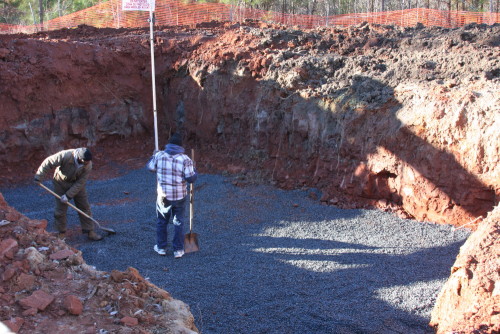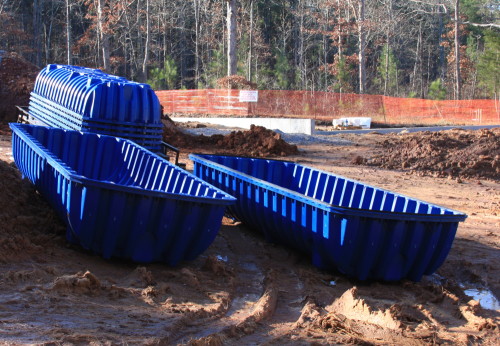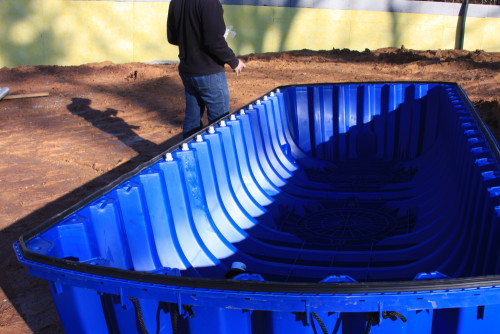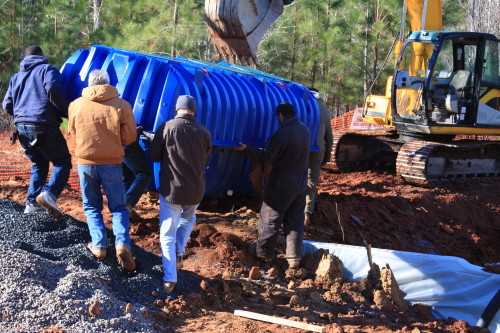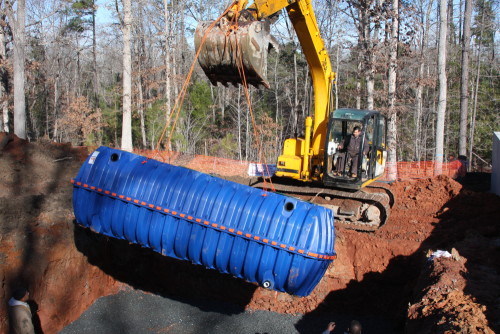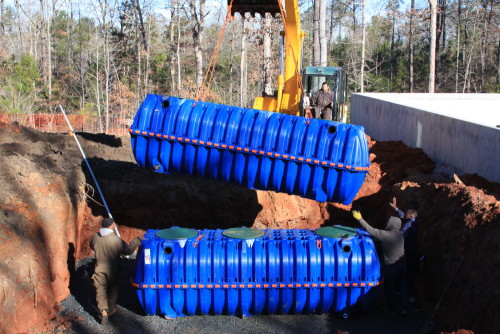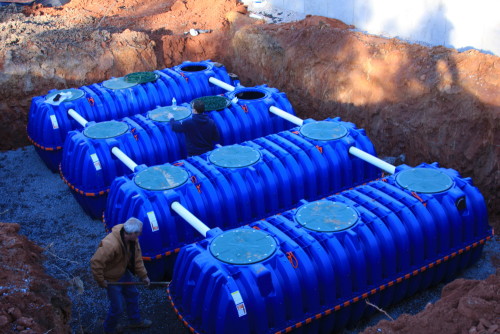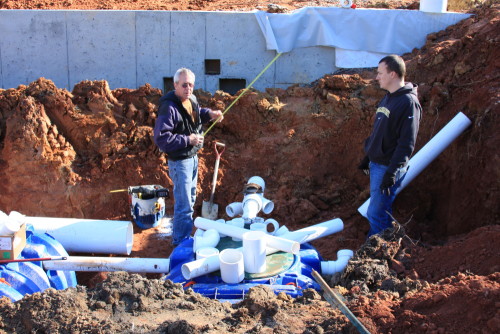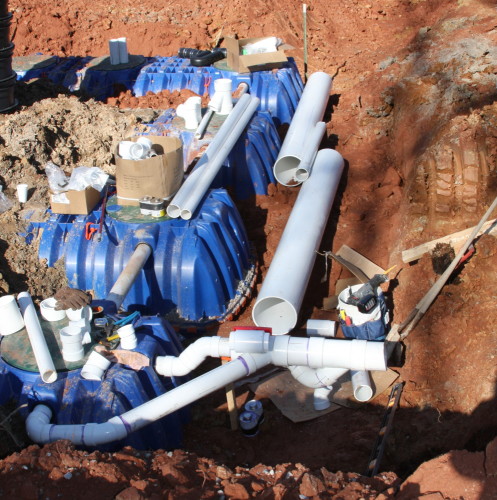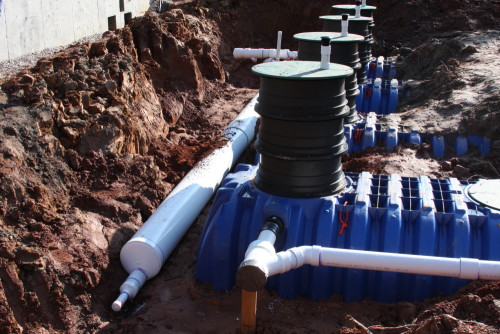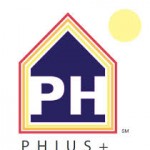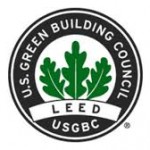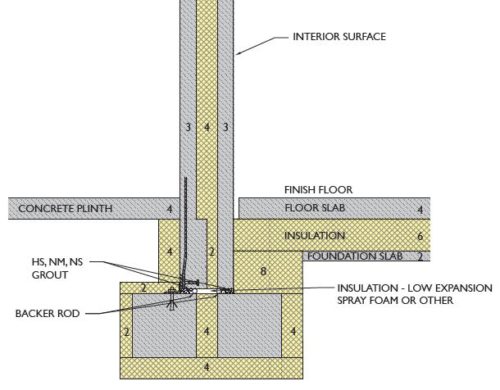 Because we’re insane (or too dumb to know better – take your pick…) we decided to take on the job of “manufacturing” the Finnish foam forms for our foundation.
Because we’re insane (or too dumb to know better – take your pick…) we decided to take on the job of “manufacturing” the Finnish foam forms for our foundation.
Pay attention to the alliteration – it will come into play later…
Here’s the deal – we have worked so hard to thermally isolate the walls, and build our giant cooler, there was no way we’d just slap them onto a normal concrete footing and let the inner wall be in normal direct contact with both the ground, AND the outer concrete wall. So – we went about thermally isolating the “inner footing” from the “outer footing”. Finnfoam was a huge part of that – but so was figuring out how to tie the 2 halves together without traditional metal rebar (a HUGE thermal conductor)
Working with our engineering firm – to make sure all these crazy ideas will actually work… we established the following design:
Then – we needed to find the non-conductive rebar – which wasn’t all that difficult (seems to be popular in Canada – gee wonder why…) so we ordered hooks and straights and picked up a pallet.
Next, I had to get my head around the fact that footings don’t really attach themselves to the ground and that when you translate the PSI rating of the foam to the PSF spec we had to meet for the compacted earth – and get comfortable with the fact that my ENTIRE FREAKING HOUSE will be sitting on 4″ or FOAM…. Ok – done with that.
We then set out to manufacture the forms. our design is pretty simple – and we figured that the foam would be standard 8′ (nope – metric) and instead it came in at 8′ 3.5″ or so…. and then the rebar hooks had to be spaced at 12″ increments – we just added a ton on complexity. Sure we could have cut them all off at 8′, but that actually would have been pretty wasteful.
So – that meant each form was fairly different in where the first hook was placed, that we had upwards of 7 different forms, and that’s before we start talking about how to deal with the corners.
“How hard can it be….?” Famous. Last. Words.

